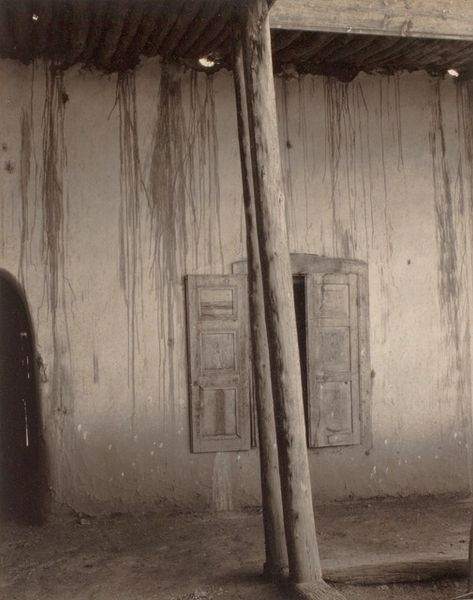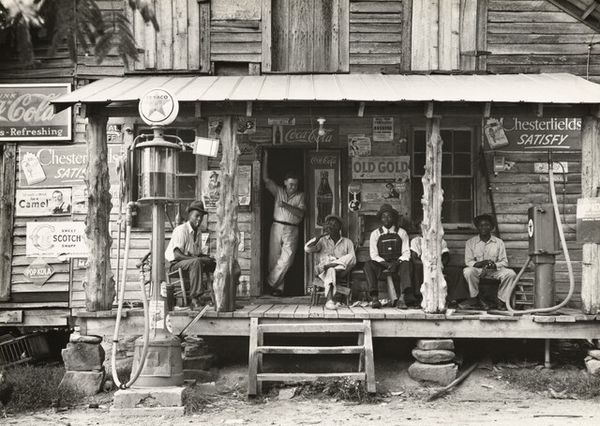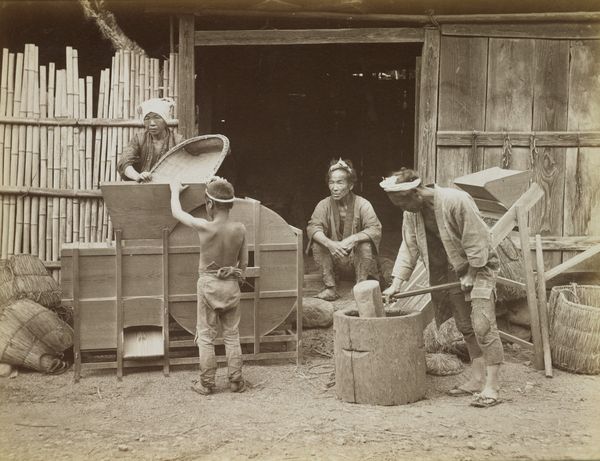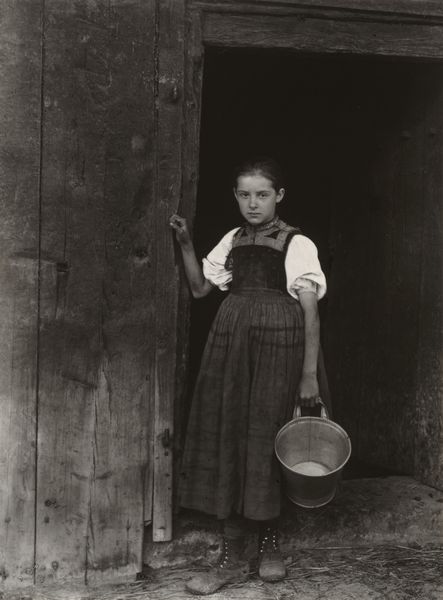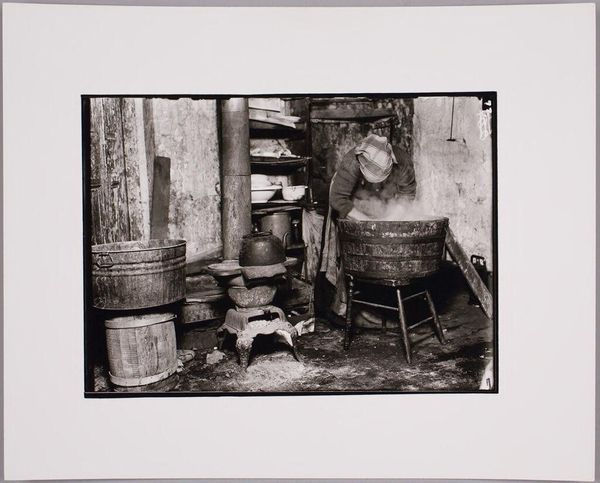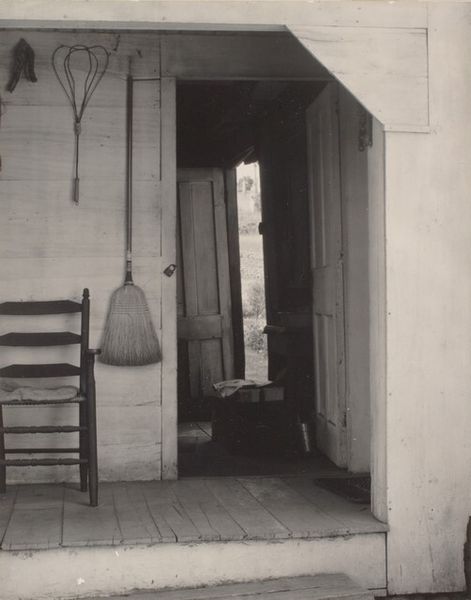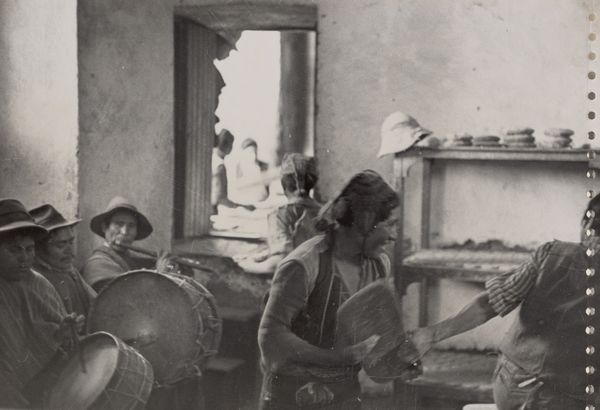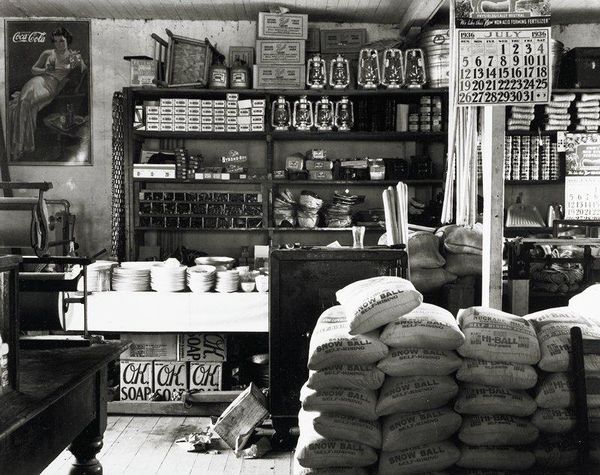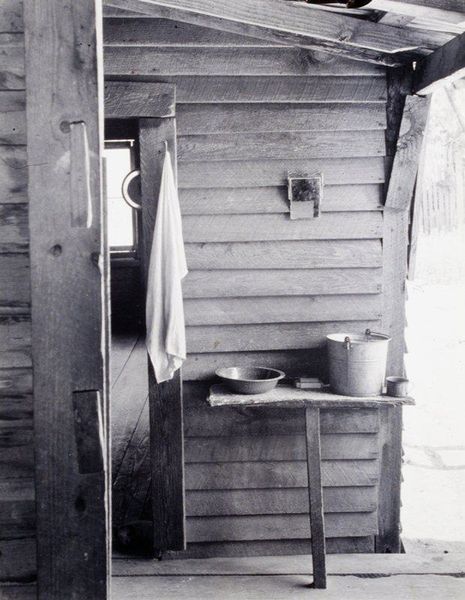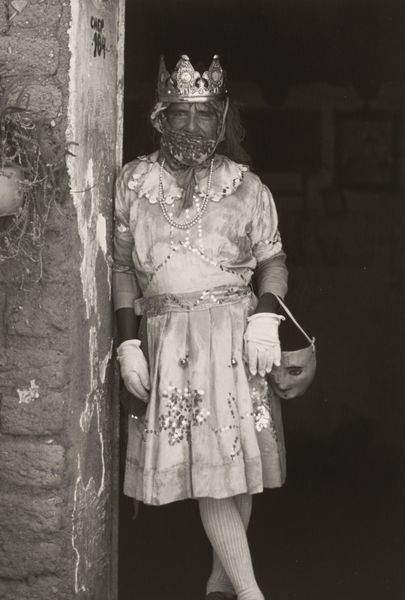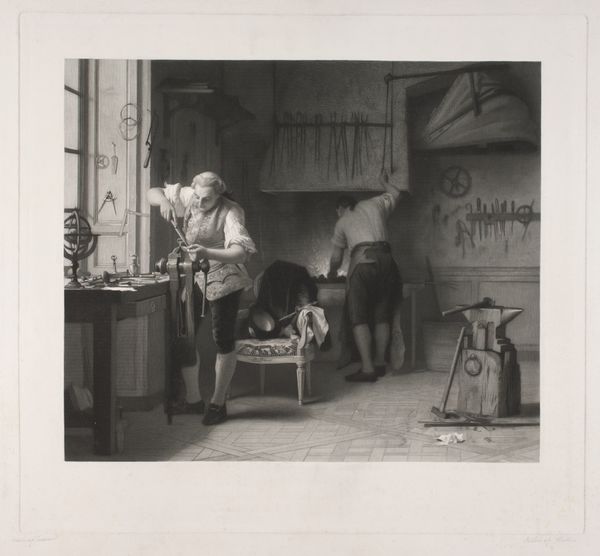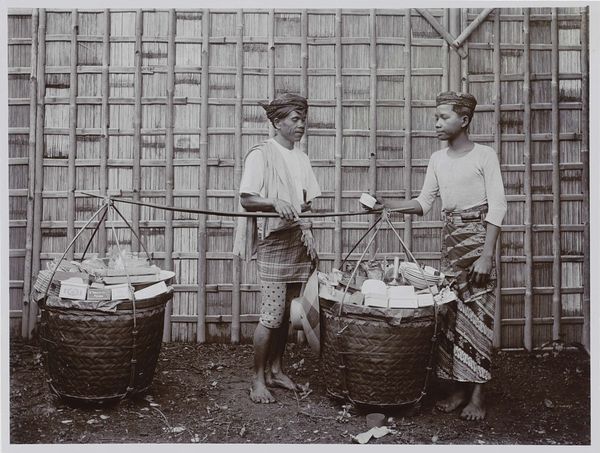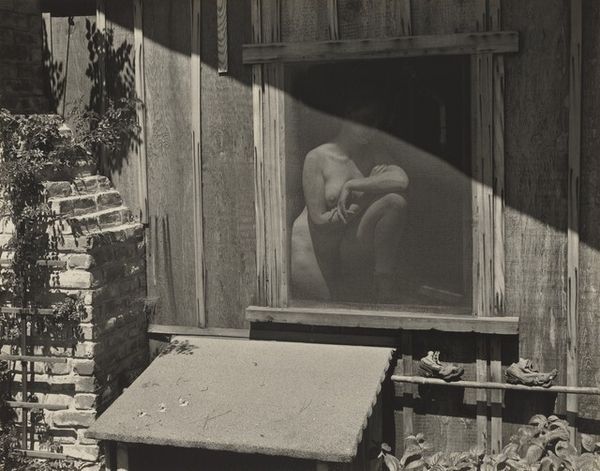
photography, gelatin-silver-print
#
landscape
#
photography
#
black and white
#
gelatin-silver-print
#
monochrome
#
realism
#
monochrome
Dimensions: image: 19.1 x 19.8 cm (7 1/2 x 7 13/16 in.) sheet: 20.3 x 25.2 cm (8 x 9 15/16 in.)
Copyright: National Gallery of Art: CC0 1.0
Curator: Immediately, I notice a profound stillness, a somberness accentuated by the stark black and white palette. Editor: We are looking at an untitled gelatin-silver print from Milton Rogovin's "Appalachia series," dating between 1962 and 1971. Rogovin focused on documenting the lives of working-class families and the impact of industrialization on communities, and this image feels very personal. The dress hanging from the door really hits you, right? Curator: It does. But let's consider the visual structure. The weathered wood, the textures... see how they almost create a tapestry? The arrangement of objects – buckets, tools, that small table filled with jars – it's a still life composed of the everyday, presented almost geometrically. This rigid formality makes me question what the relationship between these disparate forms might mean in relationship to each other, if anything? Editor: I see it, but my thoughts go to the little girl's dress hanging on the door. Rogovin was deeply committed to social justice. It makes me wonder about the economic hardships faced by families in Appalachia during that time. It also reads like a monument to the home. A single garment becomes a metonym for family. We can easily transpose feminist arguments here, about the gendered expectations of home care... Curator: I do wonder, though, if reading the photograph as exclusively representational does it a disservice? Semiotically, each element carries symbolic weight— the closed door perhaps symbolizing the closing off of a former way of life for people of this place—but let's not ignore how powerfully Rogovin composes them within the frame, using the grain of the wood to subtly suggest time and erosion. He very purposefully chose to frame these signs, but framing is key to reading them. Editor: The image feels like an attempt to capture the human condition under very specific economic and social conditions, yes? There's a palpable sense of dignity and resilience. What appears at first to be disarray gradually resolves into order. It feels important to ask, 'How do ordinary people continue on, despite adversity?' This question matters. Curator: Absolutely, I am not refuting the image’s sociological argument. However, the picture asks questions about time through tonality; the relationship of forms to each other, not people. Editor: So, while you see a play of light and shadow, form and texture, I am thinking of a record of cultural and economic realities. Both, however, find beauty in the ordinary, the discarded. Curator: It shows that an artist’s choices have rippling effects and creates new readings across multiple frames of reference.
Comments
No comments
Be the first to comment and join the conversation on the ultimate creative platform.
